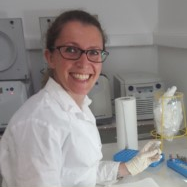Domestic and Wild Species Interaction: from Genotype to Phenotype
A special issue of Animals (ISSN 2076-2615). This special issue belongs to the section "Ecology and Conservation".
Deadline for manuscript submissions: closed (31 December 2021) | Viewed by 9981
Special Issue Editors
Interests: livestock genomics; adaptive introgression; domestication
Special Issue Information
Dear Colleagues,
Hybridisation among related species is increasingly studied due to its role in the adaptation, evolution, and diversification of species. Habitat degradation and livestock translocation have been reported to promote hybridisation between domestic species and their wild counterparts. The effects of such genetic admixture can lead to very different consequences: they can provide adaptive features or lead to the erosion of genetic diversity; they can disrupt adaptation processes or introduce beneficial traits for survival or economic purposes.
We pose three main questions to approach such a multifaceted scenario:
- How the livestock x wildlife interaction is going to affect the distribution and survival of wild species (competition/fertility/quality traits)?
- Processes related to animal behaviour, ecological features or demography might influence the level of genetic diversity of populations. What are the genetic consequences of livestock x wildlife interaction?
- How the livestock x wildlife interaction affects the distribution of diseases and survival of individuals (sensitivity/resistance)?
We welcome contributions related, but not limited, to the effect of wild x domestic interaction, in order to realise a Special Issue that extends on the current knowledge of the topic and will inspire future research.
Dr. Mario Barbato
Dr. Laura Iacolina
Guest Editors
Manuscript Submission Information
Manuscripts should be submitted online at www.mdpi.com by registering and logging in to this website. Once you are registered, click here to go to the submission form. Manuscripts can be submitted until the deadline. All submissions that pass pre-check are peer-reviewed. Accepted papers will be published continuously in the journal (as soon as accepted) and will be listed together on the special issue website. Research articles, review articles as well as short communications are invited. For planned papers, a title and short abstract (about 100 words) can be sent to the Editorial Office for announcement on this website.
Submitted manuscripts should not have been published previously, nor be under consideration for publication elsewhere (except conference proceedings papers). All manuscripts are thoroughly refereed through a single-blind peer-review process. A guide for authors and other relevant information for submission of manuscripts is available on the Instructions for Authors page. Animals is an international peer-reviewed open access semimonthly journal published by MDPI.
Please visit the Instructions for Authors page before submitting a manuscript. The Article Processing Charge (APC) for publication in this open access journal is 2400 CHF (Swiss Francs). Submitted papers should be well formatted and use good English. Authors may use MDPI's English editing service prior to publication or during author revisions.
Keywords
- Conservation
- Hybridisation
- Health
- Adaptive Introgression
- Reproduction







